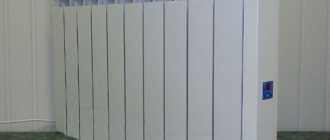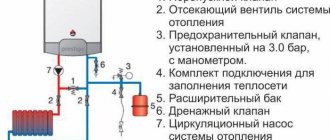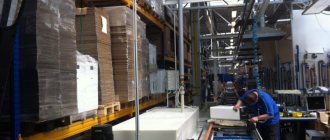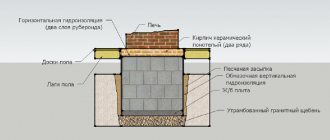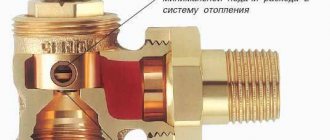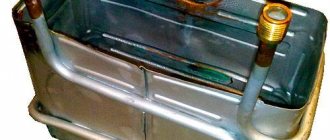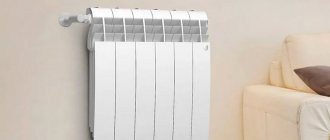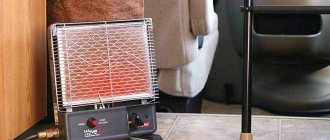Firing ceramics is considered the most important technological process, and the most energy-intensive. Without knowing the basics of chemistry, it is quite difficult to understand what exactly happens to clay during firing. However, the theory of making ceramics is accessible to anyone, since you can use ready-made recipes without going into the details of the technology. Firing allows us to obtain ceramics in our usual form from clay through many physical and chemical transformations. The so-called sintering occurs, this is the final stage of firing.
Depending on the firing technology, different results can be obtained. The main purpose of heat treatment is to increase the strength of shards, increase their water resistance, and give the ceramics a stable shade. In more detail, for each type of ceramic, firing makes its own changes.
Scrap (ceramics produced with just one firing and characterized by the absence of decoration and glaze) must become durable, but remain porous in order to subsequently absorb the glaze. After firing, bisque porcelain will become white and silky, and the glaze will shine perfectly.
The firing parameters and its technology were obtained by trial and error. It takes a lot of practice to learn all the secrets of making ceramics. An experienced master does not act spontaneously. He intuitively assumes what properties the clay will acquire after firing.
It is noteworthy that the basics of pottery art were comprehended by people far from sciences such as physics or chemistry. Indeed, from a scientific point of view, the firing technology looks quite complicated. Clay contains many chemical compounds that undergo various changes during high-temperature processing. To understand the theory, you need to have an understanding of processes such as dehydration, phase transitions, chemical reactions, crystallization and melting, as well as dissolution.
Even today there is no single method of accurate calculations to obtain one or another result. Sometimes it takes a dozen experiments to get the desired shade or the desired physical properties. However, you can control the firing process by knowing its principles and features.
Processes occurring during firing
Currently, the master has every opportunity to regulate the heat treatment process. Modern furnaces allow workpieces to be fired at high temperatures, providing high heating rates. But such a high speed is not always in demand, since certain restrictions are imposed by the speed of physical and chemical processes. It is these processes that transform raw clay into durable ceramics.
It will take some time for the process to complete. If it is not maintained, the product will not receive the properties that the ceramist expects.
It is customary to divide the firing process into certain temperature intervals. This division is due to the fact that changes occur within a certain interval. In the specialized literature you can find tables with detailed descriptions of processes. For a general understanding, it is enough to focus on the main ones.
25-200 degrees
In the temperature range from 25 to 200 degrees, the internal energy of the product increases. The heating rate is quite low, so interlayer (bound) water has time to remove. During this period, it is important to evenly heat the clay layers.
The first stage is able to identify previously made technological errors. For example, uneven masses or bubbles may appear that are formed as a result of poor kneading or uneven drying. If excessive smoothing is allowed, accumulations of gases will occur, since they do not have the opportunity to escape through the pores.
It is desirable that the furnace design allows the heating rate to be adjusted. It is selected based on conditions such as the volume of the muffle, the mass of the fired products, and the thickness of their walls. Massive clay shards must be heated gradually so that the heat has time to penetrate the material and the product evenly increases its temperature.
But you shouldn’t slow down the heating too much, as this can lead to a “steaming” effect. The effect manifests itself in the appearance of stains on the glaze as a result of condensation of salts dissolved in water. The average heating rate in the first stage is about 100 degrees per hour. At this stage, glaze coatings are at risk of cracking if intense evaporation of moisture occurs.
200-400 degrees
In the temperature range from 200 to 400 degrees, the removal of bound water is finalized. In addition, most of the organic compounds burn, so it is important to ensure a good flow of oxygen at this stage. Organics in clay can be found in the form of additives and binders, but the material itself also contains natural organic elements. Their burnout can last much longer, up to the heating stage of up to 700 degrees.
The heating rate in this range also does not exceed 100 degrees per hour. Typically, when the temperature reaches 400 degrees, a 15-minute exposure is made. The muffle plugs must be open so that the released gases leave the furnace space. At the same time, firing must be oxidative, that is, the process occurs when it interacts with oxygen.
400-600 degrees
At higher temperatures, water is released, which is part of the crystal lattice of clay minerals. This process is called dehydration. The dehydration process itself does not involve any difficulties, however, during the destruction of clay minerals, internal stresses are locally observed in the layers of the material.
Particular attention should be paid to the rate of temperature rise near 573 degrees. At this temperature, a phase transition occurs, during which polymorphic quartz, stable under normal conditions (α-quartz), transforms into a high-temperature modification (β-quartz).
When passing this mark, it is recommended to further reduce the heating rate, since additional stresses arise throughout the entire volume of the shard. After the temperature of the product reaches 600 degrees, hold for about 30 minutes.
600-800 degrees
In the specified temperature range, clay has reduced strength properties. The fact is that during firing a modification of clay minerals occurs. The original minerals have already decomposed, but new minerals have not yet formed, that is, the ceramics have not sintered. All materials are in the solid phase.
It is advisable to go through the range from 600 to 800 degrees in accelerated mode. The heating rate must be at least 130 degrees per hour. Stopping heating can be fatal for the future product.
800-1000 degrees
Sintering of ceramics begins at a temperature of 800 degrees. It is impossible to name the exact temperature, since its value depends on the composition of the clay. By this time, the remains of clay minerals are transformed into new minerals by recrystallization and combination with other substances. During the chemical interaction of some clay components, gaseous substances are formed. It is important that it is at this stage that the formation of volatile substances is completed.
A more detailed firing recipe, that is, the final temperature, heating rate at each stage and holding time, depends on the composition of the clay. The carbonates present in clay become liquid at high temperatures. Burning such shards is fraught with the formation of a glassy substance with low strength and low porosity. Clays that do not contain carbonates sinter faster, so they are fired with the first firing at a temperature of 950 degrees. High-temperature fireclays are fired according to the so-called “faience” scheme shown below.
In small workshops without sophisticated equipment, it is very difficult to regulate the cooling process, so most often craftsmen simply turn off the furnace, allowing the ceramics to cool naturally. However, there are some nuances here too.
The oven should not be opened to increase the cooling rate. It is believed that ceramics should cool down in the same amount of time as it was heated up.
Stone masses and porcelain contain a lot of quartz, so again, when passing the 573 degree mark, you should slow down the cooling rate. You can open the oven only after the temperature in it drops below 160 degrees.
Is it possible to add decoration to clay products?
Yes, you can! There are several ways to decorate clay products:
- Stamps with counter-relief. They can be found in specialized stores. Use them on slightly damp clay to make markings that are great for patterns or even "signatures".
- Tools: Forks, knives, needles, combs or the like can create amazing designs and textures that your pottery will benefit from.
- Imprints: leaves, stones, branches or similar. Press them gently into the clay to create an impression before firing or drying the piece.
The decoration really looks good, and unless you are creating pottery that requires glazing, these little decorations will make your pottery even more attractive.
Types of firing
After the basics of the firing process when heating and cooling materials have been outlined, we can take a closer look at the essence of waste firing. However, it is more appropriate to describe it in the context of a generalized theory, so we will talk about all types of firing. Most types of ceramics are fired in several stages. The most popular scheme is the two-stage firing scheme, although there are recipes consisting of 3 or more stages.
In a two-stage firing scheme, the first is called waste or intermediate. For the first firing, the product is dried, but not decorated. To be precise, partial decoration with colored clay or engobes is allowed. The product is covered with glaze only before poured firing, since heat treatment of the glaze requires higher temperatures than during waste firing.
Scrap, crock and biscuit are all synonymous words and mean a semi-finished product that has yet to be worked with. The scrap is decorated with overglaze or underglaze paints, glazes or engobes containing fluxes. It is difficult to independently choose the temperature of waste firing, since it is necessary to determine the temperature range in which the processes of gas formation and strength gain would be completed, but at the same time the porosity would remain high enough so that the glaze could subsequently be applied. As a rule, they use ready-made, long-developed schemes that have been tested in practice.
Poured firing is needed for heat treatment of both the shard itself and the glaze or paints with which it is decorated. The firing temperature is also determined for each composition separately. The recipe for the first and second firing is very diverse, but there are five main schemes used by ceramists. The use of one or another scheme depends on the type of ceramic, therefore, before we begin to describe the firing schemes, we will answer that all ceramics are conditionally divided into several types.
- Porcelain and stone masses. This type of ceramic is distinguished by the presence of carbonates, therefore, during firing, a lot of flux occurs, that is, a large mass remains in the liquid phase.
- Faience. Earthenware ceramics are characterized by the absence of a liquid phase.
- Majolica. It includes products made from red clay, pottery products and terracotta.
- Chamotte. Refractory clay, which contains grains of previously fired material.
Firing pattern for porcelain
At the first stage, waste firing is carried out. Clay products are dried, but not covered with glaze. The temperature of waste porcelain firing does not exceed 1000 degrees. As a result of this heat treatment, the shards acquire the required strength and porosity.
The shards after waste firing are called waste. They are suitable for glazing using various methods. Underglaze paints and the glaze itself are applied to the finished scrap. Then water firing is carried out. The firing temperature can reach 1420 degrees (for real porcelain).
Firing pattern for faience
Waste firing of faience is carried out at a higher temperature, since there are practically no fluxes in the material. This means that if a shard is fired at a temperature of 1250 degrees, it will remain porous.
The temperature for flood firing is dictated by the melting point of the glaze. Thus, the temperature of poured firing of earthenware can be lower than the temperature of waste firing. The fact that faience can be fired at a lower temperature makes it possible to carry out a third, decorative firing, using the entire range of glaze colors.
Firing pattern for majolica
To make majolica, clays that are not highly refractory are used. They must not be burned out, otherwise defects and swelling will form. Some clays are prepared within a narrow temperature range. For example, at a temperature of 950 degrees they are still quite loose, but at a temperature of 1050 degrees they are already tightly sintered.
Waste firing takes place in a mode where all clay minerals are completely transformed. The average temperature of the first firing ranges from 900 to 950 degrees. The poured firing mode is set based on the properties of the glaze.
Scheme for firing fireclay
Fireclay masses contain a rigid frame made of pre-fired grains. It prevents clay from shrinking during the firing process. The absence of shrinkage allows clay to be fired at high temperatures (for other materials, the temperature is limited due to the occurrence of deformations).
The basic firing scheme is classical. First there is waste firing, and it is replaced by irrigation. If necessary, additional decorative firing can be carried out.
Single-stage firing scheme
One-stage firing is justified only by the fact that it is the most economically profitable. Factors such as energy costs and labor costs for loading products into and unloading from the oven play a role here.
The one-stage firing scheme is simple: glaze is applied to the dried shard, and then the general firing takes place in one step. Thus, waste firing and glaze firing are combined.
But this method has several disadvantages. You have to decorate a product from raw clay, and this is very inconvenient. To fix the glaze on the surface of plastic clay, it is necessary to use special additives. This method cannot be used when working with low-temperature paints and glazes.
Advantages of making clay products at home
There are several advantages of making ceramics at home that determine the popularity of this craft:
- It's cheaper in the long run because you don't need to rent a studio.
- All supplies of materials are always at hand.
- This saves time, no need to travel anywhere.
- Minimal investment required.
- Allows you to do this in the comfort of your home.
There are also a few disadvantages to doing this at home:
- You won't have a teacher to help you.
- You have to study everything yourself.
- You may not have the super professional tools that studios have.
- You may be limited in the items you want to make.
If you're just learning how to make ceramics, the first thing you need to do is work on your technique, and doing this at home is a good way to create a comfortable space and learn the basics of the craft. But if you don't have a home studio, then it's also worth trying to work in a specialized studio, especially if you don't have your own materials. This will allow you to quickly learn the basics of the technique and see if you can create a more comfortable environment for making clay products in your home.
Pottery kiln manufacturing technology
“Factory” furnaces, especially those for professional purposes, are very expensive (over 35,000 rubles), but craftsmen have learned to make firing devices with their own hands. It is worth noting that, depending on the type of fuel used, such stoves can be:
We will consider only the first two, since it will be quite difficult to achieve the required temperature by burning wood. Let's start with electrical equipment. According to the method of location, these firing furnaces can be:
- muffle (in which the heating elements are located around a sealed vessel (muffle) made of fireclay material; Russian schools are often heated with the help of such stoves);
- chamber (the heating device is located inside).
The second option is more suitable for home production, since it is quite difficult to build a large muffle on your own, and the heat loss of the muffle structure is high. Let's look at how to make a chamber furnace.
How to dry clay?
Unless you are working with a kiln, you are most likely going to air dry your clay or bake it in the oven. There are several ways for each of them.
For baking in the oven:
- Preheat oven to desired temperature.
- Place the clay piece there on a tray.
- Bake for the required amount of time.
- Check the hardness of the product.
It's simple, but again, the heat isn't high enough for porcelain or earthenware.
For air drying:
- Place the product in a safe place.
- Wait. This may take up to 24 hours.
- Check the product for hardness and give it more time if necessary.
- If you're air drying, use fine-grit sandpaper to remove any minor imperfections before moving on to painting.
Drying pottery takes time, but proper drying techniques can help you avoid mishaps.
Furnace structure
The final stage of creating a ceramic product is firing it. In this case, pottery kilns are indispensable devices. Before you start building your own, or purchase a ready-made one, you need to understand the design of this invention. It has a very simple structure:
- Thermally insulated firing chamber made of refractory material
Gas burner, or heating device
Loading and unloading device
Regulating devices
A serious approach to the selection of equipment will ensure the production of quality products. Moreover, not only the design is important, but also the accompanying materials, be it a mixture for fireplaces and stoves, solutions and other means. All modern furnace equipment is equipped with a software system, thanks to which the heating or firing furnace has convenient control. With the help of this system, the execution of work can be regulated by dozens of specially established modes, in which it is possible to fire a wide variety of materials and objects.
Today, the production of bricks and other clay-based materials is a very profitable business. Large enterprises use large-format industrial ovens available in a wide range of sizes and shapes. (See also: DIY tandoor oven)
Of course, for your own production, by the way, a small-sized oven is ideal. Many enterprises today are engaged in the manufacture of custom-made devices at the request of the consumer. Moreover, this option for purchasing equipment is the most optimal, since the furnace will be made for a specific job.
Electric ovens are now very popular. They have a special welded chamber made of metal profiles. It goes without saying that it has high thermal insulation, since there are fire-resistant bricks and various fibrous materials here. Such furnaces are characterized by small dimensions. This design is often mistaken for a decorative stove, however, this is not so. Its small size is associated with the smaller thickness of the lining. The equipment is equipped with a swing door and high-level heating coils. This approach eliminates the possibility of deformation of the fired products. The equipment is equipped with a software system and a microprocessor temperature controller.

